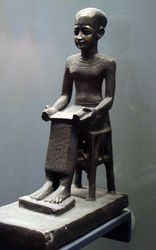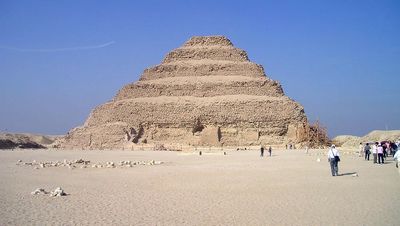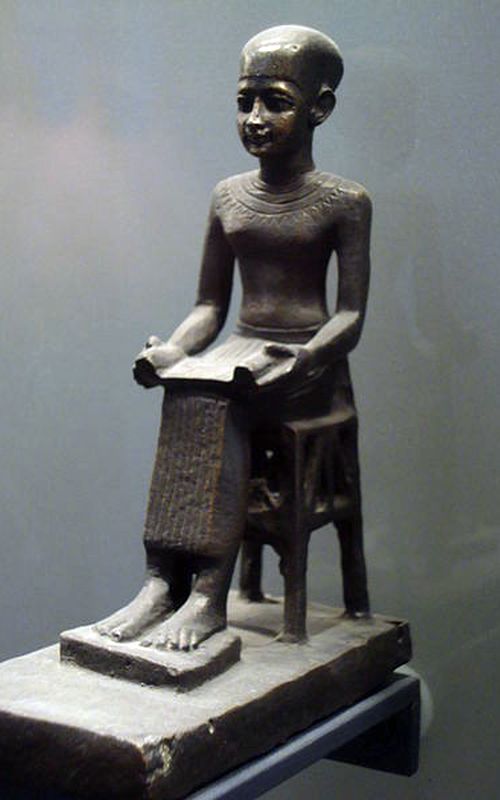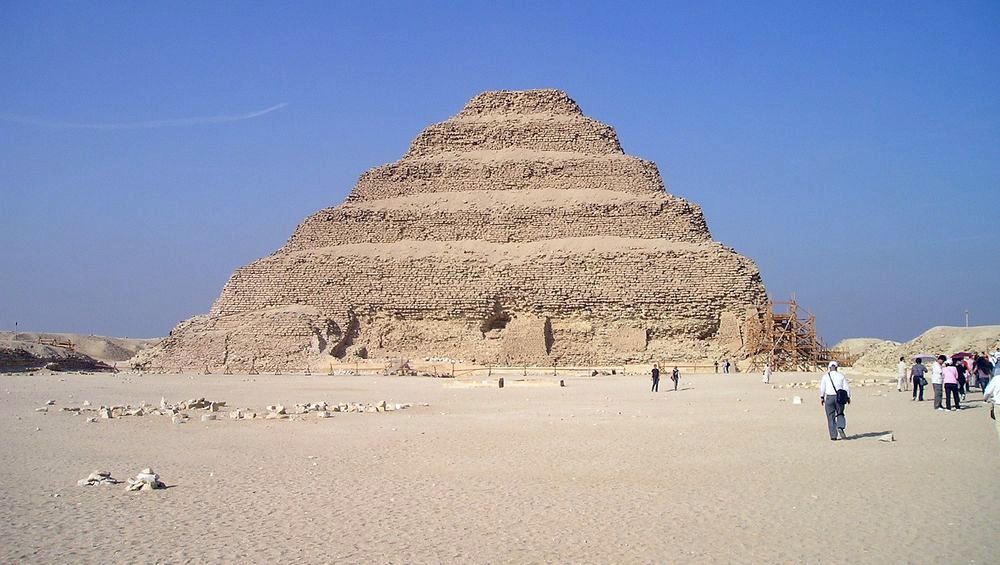
Imhotep
Imhotep is a character from Egyptian antiquity who lived in the twenty-first century BC, under the pharaoh Djoser. The dating of his reign is not fixed by the scientific community, but the period from -2691 to -2625 is considered to be similar. Imhotep therefore lived "around" this period.
Functions
Imhotep was a senior state official. He held many positions as head of the royal administration, high priest, chief architect, head of justice and king's doctor. Although these functions seem to us to be distinct today, at the time of Djoser's reign these limits were much more vague since the architect's function consisted essentially of building the tomb of the pharaoh so that he could pass into the afterlife , which is related to keeping it in good shape during the reign years, hence the link between architecture and medicine. The link with the priesthood is obvious because as a high priest he had a special relationship with the hereafter, hence his function as architect and high priest.
Note that the words "high priests" do not represent a function in themselves, it is just an appellation to mark the spiritual superiority of this man over the clergy.
This position will later be associated with the vizier function, but this function did not exist yet under the Third Dynasty. It will appear only under the pharaoh Snefrou, father of Khufu, at the beginning of the IVth dynasty.
The architect
Architecture is the area for which Imhotep is the best-known specialist. For the neophytes, it is rather the religion which is put forward, but it is only a vision given essentially by the popular imagination (In particular the cinema). But it's good for his architectural skills that Imhotep is recognized. He was the builder of the funeral complex of his pharaoh Djoser , which has the distinction of having the very first pyramid in Egyptian history, and even of the history of humanity. He is the first to have built a pyramid on the tomb of his pharaoh, and include it in a large funeral complex including many elements that will end up in the burials of his successors.
The work of his life

Pyramid of Djoser
The funerary complex of Djoser consists of a large rectangular area surrounded by a high wall with steps, and divided into two parts separated by the pyramid. On either side are two courtyards, one to the north and the other to the south, surrounded by various elements such as chapels, altars dedicated to the sun, warehouses, a temple, a serdab (blind room equipped with a statue of the Pharaoh that allowed him, once dead, to see through the eyes of his statue the offerings made in his name), and even another tomb, isolated. The pyramid was built in several stages: Initially simple mastaba, it was enlarged a first time, then one built a pyramid with steps, above. Finally this pyramid was enlarged to rise to 60m height, a size it still has today.
When we talk about the talent of architect for Imhotep, it is not a vain word, he did not build a tomb but the equivalent of a real city. This project probably lasted for years but could be completed.
Learn more about the pyramid of Djoser.
Unfortunately we have no traces of other constructions of which he is the author. But the little documentation that specialists have on this subject is so weak that Imhotep has no problem in constructing other buildings, but we do not know them today.
Imhotep's contribution to architecture
Just look at the pyramid of Djoser to understand what is the contribution of this character to the architecture: The stone construction. If we can easily imagine that it was not the first to cut blocks and then stack them to build buildings, this is the first one to do it on very large buildings, showing its know-how in study of the resistance of rocks. Several pyramids were never carried out on their terms during ancient Egyptian times, it was always because the weight of the pyramid made it collapse on itself. The genius of Imhotep is to have managed these problems of forces so as to mount a monumental work.
Imhotep is therefore also the creator of the pyramids, especially pyramids with degrees.
Doctor
Imhotep was in charge of the good health of the pharaoh. We have very little evidence of this state of affairs that could even be completely false. This belief comes from the discovery of the Ebers papyrus, a very old document giving details of the human anatomy and which can be considered as the first Egyptian medical document.
This document has long been attributed to Imhotep but nowadays we know that it dates from the New Kingdom, probably from the reign of Amenhotep III. However the association between medicine and Imhotep is perennial and could well be true since it is a fact that he was close to the pharaoh, and that few were the men in this case. That he was close enough to be a doctor is quite plausible.
The high priest
Regarding the religious aspect, it is a fact that Imhotep had important functions. He reformed to bring the cult of Osiris into the Egyptian pantheon.
After his death, Imhotep will be the subject of an important cult during the New Kingdom. It was a period during which the Egyptians turned to the important personages of the ancient empire to magnify them, and for some to deify them. This was the case for Pharaoh Khufu, but also for Imhotep who was associated with God Thoth (represented with an ibis head). His cult was alive and there were even temples dedicated to Imhotep (especially that of Philae, the best known).
Parcel data
Of course, very few data have survived, it must be said that there have been 47 centuries between our time and the one in which he lived.
The most famous titles have been found under a statue in his name, it indicates the following functions:
The Chancellor of the King of Lower Egypt, administrator of the Grand Palace, hereditary nobleman, High Priest of Heliopolis, Imhotep, the builder, the sculptor, the maker of stone vases.
Heliopolis was the city of light (Helios, the Sun), it was the city of god Ra located on the right bank of the Nile, near Memphis, the capital.
Another inscription of the same period quotes Imhotep on a stele of Séhel, near Elephantine. She tells how Pharaoh Djoser put an end to the drought by following the advice of his administrator Imhotep.
Imhotep in the popular imagination
Such a mysterious character obviously did not leave Hollywood indifferent. So you find him as a main character, and generally negative, in many movies.
The best known is also one of the most recent, it is of course the film "The Mummy", whose historical accuracy is to the film what the blow of stick is to the friendship. Suffice to say that we should not look at it for the historical facts, it is only a set of ineptitudes, but it is not necessarily the historical precision that we seek here. Imhotep is represented in the form of a living mummy gradually resuming life by absorbing the physical characteristics of the living. A little fright and a lot of fights ... To give a very false image of Imhotep.
Imhotep is also the name of the museum of the necropolis of Saqqara, south of Cairo. It is of course in this necropolis that is the pyramid of Djoser. This museum was built in the 2000s following the will of the French Egyptologist Jean-Philippe Lauer who worked all his life on this site.
Learn more about Saqqara's Imhotep Museum.






















